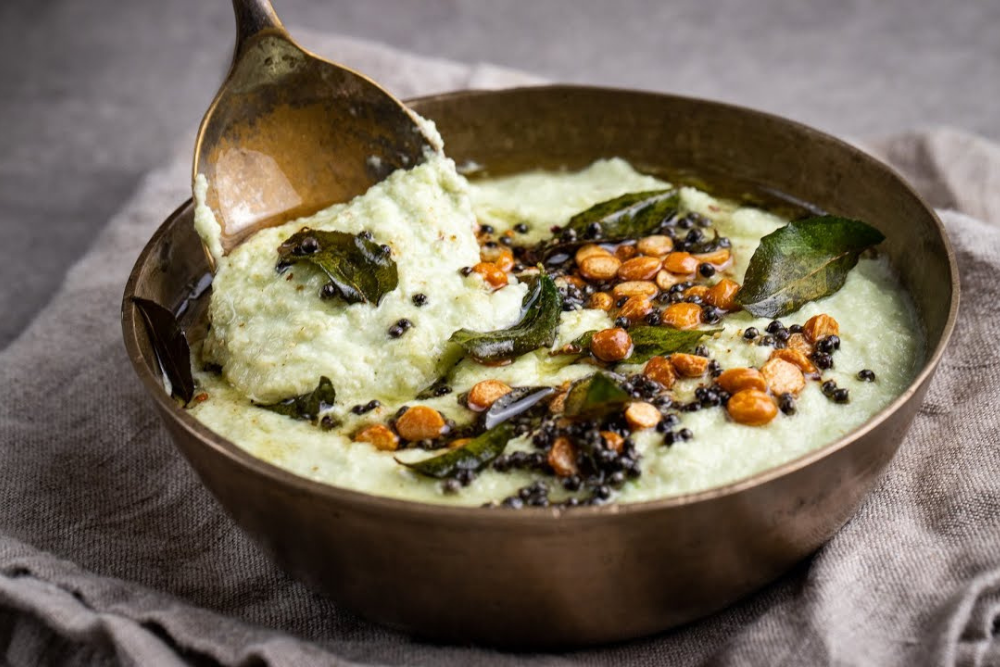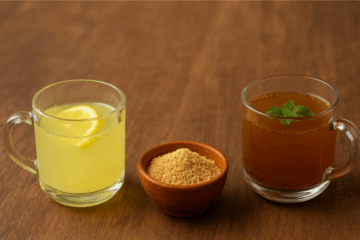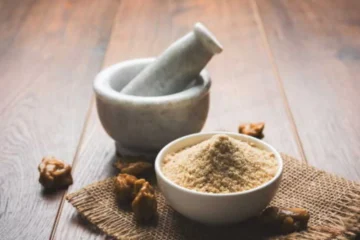Coconut chutney is a South Indian staple, but when infused with a touch of hing (asafoetida), it becomes a delightful fusion of flavor and functionality. This blog explores how this humble chutney becomes a powerhouse when spiced with hing — from boosting digestion to fitting various dietary needs.
What does adding hing to coconut chutney do for flavor and digestion?
Short Answer: Hing adds an umami-rich, savory depth to coconut chutney while aiding in digestion, reducing bloating, and easing gas-related discomforts.
Detailed Benefits:
- Enhances Flavor: Hing provides a mildly pungent, umami-like depth that complements the creaminess of coconut.
- Aids Digestion: Known for its carminative properties, hing supports the breakdown of complex foods.
- Reduces Gas & Bloating: The anti-flatulent properties help prevent stomach bloating after heavy meals.
- Balances Gut Flora: Hing has antimicrobial effects that support intestinal health.
- Boosts Appetite: The strong aroma stimulates digestive enzymes and hunger.
Is coconut chutney with hing suitable for people with digestive sensitivities or bloating issues?
Short Answer: Yes, this chutney is suitable for those with sensitive digestion, thanks to the soothing properties of coconut and the gut-friendly benefits of hing.
Why It Works:
- Soothing Base: Coconut is naturally cooling and gentle on the stomach lining.
- Hing’s Role: It helps break down proteins and carbs efficiently, reducing bloating.
- No Harsh Spices: This chutney can be made with minimal chili for sensitive stomachs.
- Fiber-Rich: Coconut pulp offers fiber that helps maintain bowel regularity.
- Natural & Preservative-Free: The chutney, when freshly made, contains no additives that upset digestion.
Can I pair this chutney with other meals beyond idli and dosa?
Short Answer: Absolutely! Coconut chutney with hing can be paired with sandwiches, wraps, grain bowls, and more, making it highly versatile.
Creative Ways to Use It:
- Sandwich Spread: Use it instead of mayo or butter for a spicy-smooth flavor.
- Rice Bowl Topping: Add it to brown rice, millet, or quinoa bowls for a south Indian twist.
- Chapati or Millet Roti Dip: Works wonderfully as a side dip for any flatbread.
- Tiffin Companion: Ideal for travel meals or lunch boxes, especially with lemon rice or pongal.
- Veggie Wrap Filling: Combine chutney with grated carrots and sprouts for a fiber-rich filling.
How do I make this chutney last longer without compromising taste or aroma?
Short Answer: Store it in an airtight container in the refrigerator, use natural preservatives, and avoid adding water during grinding.
Chutney Storage Tips:
- Use Desiccated or Dry Coconut: Reduces moisture content and increases shelf life.
- Tempering with Oil: Adding a tempering of mustard seeds, urad dal, and hing in oil acts as a preservative.
- Store in Glass Container: Airtight glass jars retain freshness better than plastic.
- Keep Refrigerated: It lasts for 3–4 days in the fridge with no change in taste.
- Optional Additives: A pinch of citric acid or a few drops of lemon juice can increase shelf life naturally.
| Storage Method | Expected Shelf Life | Additional Notes |
|---|---|---|
| Room Temperature | 4–6 hours | Best avoided in summer months |
| Refrigerator | 3–4 days | Use sterilized, airtight containers |
| Freezer | Up to 10 days | Thaw naturally; avoid microwaving |
Can I adjust the spiciness and texture to suit kids or elderly family members?
Short Answer: Yes, the spiciness and texture can be easily adjusted, making it ideal for children and older adults who may prefer milder and softer foods.
Customisation Tips:
- Reduce Chilies: Use only one green chili or skip entirely for kids and elders.
- Adjust Texture: Add warm water or coconut milk to make it smoother and easier to swallow.
- Skip Garlic: For those with acidity, remove garlic from the recipe.
- Use Mild Hing: A small pinch is enough to maintain flavor without overpowering.
- Pair with Soft Foods: Serve with soft idlis or rice kanji for an easy-to-digest combo.
Conclusion
Coconut Chutney with Hing is more than just a condiment — it’s a flavorful, digestive-friendly, and versatile dish that fits into various lifestyles. Whether you’re prepping meals for a family gathering or want to add South Indian zing to your wraps, this chutney stands out for both taste and wellness. Don’t forget, hing isn’t just for tadka — it’s a transformative spice that turns a simple chutney into a healing, hearty experience.





